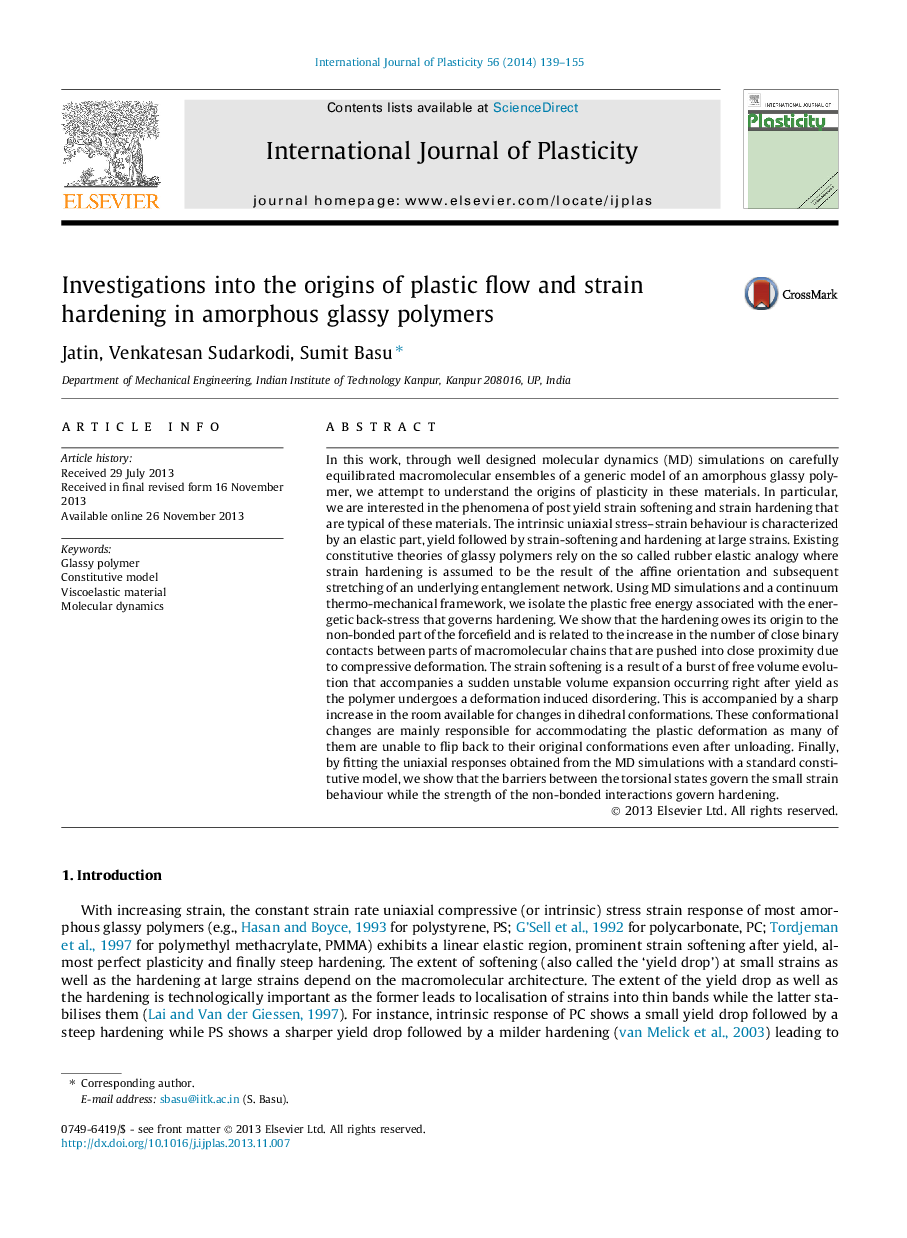| کد مقاله | کد نشریه | سال انتشار | مقاله انگلیسی | نسخه تمام متن |
|---|---|---|---|---|
| 784396 | 1465617 | 2014 | 17 صفحه PDF | دانلود رایگان |
• Molecular simulations were used to investigate the origins of plasticity.
• Unstable expansion with free volume growth, on yield, causes strain softening.
• Residual plasticity is due to irreversible conformational changes during deformation.
• Hardening is due to rise in closely contacting chain parts during compression.
• Torsion state flips govern small strain trend and non-bonded forces govern hardening.
In this work, through well designed molecular dynamics (MD) simulations on carefully equilibrated macromolecular ensembles of a generic model of an amorphous glassy polymer, we attempt to understand the origins of plasticity in these materials. In particular, we are interested in the phenomena of post yield strain softening and strain hardening that are typical of these materials. The intrinsic uniaxial stress–strain behaviour is characterized by an elastic part, yield followed by strain-softening and hardening at large strains. Existing constitutive theories of glassy polymers rely on the so called rubber elastic analogy where strain hardening is assumed to be the result of the affine orientation and subsequent stretching of an underlying entanglement network. Using MD simulations and a continuum thermo-mechanical framework, we isolate the plastic free energy associated with the energetic back-stress that governs hardening. We show that the hardening owes its origin to the non-bonded part of the forcefield and is related to the increase in the number of close binary contacts between parts of macromolecular chains that are pushed into close proximity due to compressive deformation. The strain softening is a result of a burst of free volume evolution that accompanies a sudden unstable volume expansion occurring right after yield as the polymer undergoes a deformation induced disordering. This is accompanied by a sharp increase in the room available for changes in dihedral conformations. These conformational changes are mainly responsible for accommodating the plastic deformation as many of them are unable to flip back to their original conformations even after unloading. Finally, by fitting the uniaxial responses obtained from the MD simulations with a standard constitutive model, we show that the barriers between the torsional states govern the small strain behaviour while the strength of the non-bonded interactions govern hardening.
Journal: International Journal of Plasticity - Volume 56, May 2014, Pages 139–155
